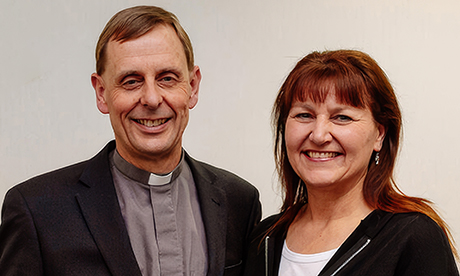Like many other organisations across New Zealand every Anglican parish and diocese faces acute financial challenges in this era of increasing compliance and insurance costs, wages and salaries to meet inflation and the general rise in the cost of living and operating.
At least three dioceses outside of Christchurch face significant, multi-million-dollar challenges getting their cathedrals made quake safe.
However, I do accept that the question in 2024 is what exactly is the ability of the Anglican Diocese of Christchurch to contribute more funds to the project to reinstate its own cathedral?
This is particularly important as we review the costs of the reinstatement and when questions are being asked about where funding is coming from.
In 2017 the local governing body, the Christchurch Anglican Synod, made the decision to reinstate Christ Church Cathedral on the basis which the government and council proposed.
This was, for their part, the Anglicans contribute our cathedral insurance funds of $44 million. Synod welcomed this assurance because our parishes each had their own building challenges given the extensive damage to many following the Canterbury earthquakes.
In 2024, some recent media reports and commentaries have raised the question of the ability of “the Anglican church” to contribute more to the Christ Church Cathedral Reinstatement Project.
This has included some eye-wateringly large sums of money mentioned as Anglican assets without actual analysis of availability.
If only.
For example, Liz McDonald’s (The Press), begins with a reference to “$3 billion dollars” held by the Anglican Church in Aotearoa, New Zealand and Polynesia.
Stating such a large sum without explanation overlooks the fact that the Anglican Church of Aotearoa is a large, extensive and dispersed organisation, with properties and funds spread across parishes and dioceses from Cape Reinga to Stewart Island.
Unlike some other faith-based organisations, finances are not centralised.
Each local parish and diocese have the decisive say in whether or not property is sold and in how its funds may be used.
There are also clear and specific terms of trusts constraining parish or diocesan council decision-making.
There are also a number of funds to benefit the wider community which are well-used for purposes other than church buildings.
The largest of these is the St. John’s College Trust which is tightly scripted by an Act of Parliament for education.
Many other Anglican trusts throughout the country are also established under Acts of Parliament that legislate both purpose and benefit.
However, for local Anglicans, our challenge in 2024 is to find ways to assist the reinstatement project, as it is no longer 2017.
This includes finding any funds surplus to rising expenses and current requirements.
To this, we’ve already transferred $3.8m from the sale of St. Luke’s land on Kilmore Street to the project.
Instead of a rebuilt structure on that site, we’ve employed a popular vicar-at-large delivering pastoral care in Doc Martin boots among the streets and in the many cafes and meeting places of the city.
The Transitional or ‘Cardboard’ Cathedral has also served well as both a place of worship and important community space. We’ll soon decide the future of this site with the return to the Square.
It is possible proceeds from its sale could also assist funding of the reinstatement.
Other Anglican church properties have been or are in process of being sold.
Whether these proceeds are surplus to local requirements and unconstrained by trust deeds, is a matter of investigation and dialogue that I’ll lead as Bishop throughout the year.
In the meantime, we have begun an appeal to individual Anglican parishioners to give, above and beyond their giving to their parishes.
Through this campaign we look forward to raising $2.5m in contributions.
Although we are talking about restoration of a much-loved building and place of worship, people remain the centre of our faith and our fundraising will never affect those core social, community and other essential services we provide.
This is also important as the Cathedral itself means more to the people of Christchurch than just to the Anglicans.
It is also an important part of our regional identity, is part of our city council logo and both welcomes all faiths and those of none.
As a proud Cantabrian, I spent many hours among and being educated under, the eaves of some of the most beautiful gothic revival architecture ever built. The Christ Church Cathedral was the pinnacle and the only stone-built gothic revival Cathedral in the country – also rare internationally.
Along with my faith, this privilege was perhaps an unsurprising factor in my vocation to become an Anglican vicar.
But it is to serve the wider Christchurch community, new and established local people, increasingly diverse, brave, and resilient that gather under many of our rebuilt structures today, where true privilege lies.
I’ve been humbled by the financial support we’ve already received from parishioners, and it has been heartening to see how much has been given by people of other regions, denominations and across all faiths – understanding the universal need for places of sanctuary as well as also real places of grounding and peace for a community such as ours that has endured so much over the last decade.
- Peter Carrell is Anglican Bishop of Christchurch. He is photographed here with wife, Teresa Kundycki-Carrell.
- First published in The Press. Republished with the writer’s permission.
News category: Analysis and Comment.




